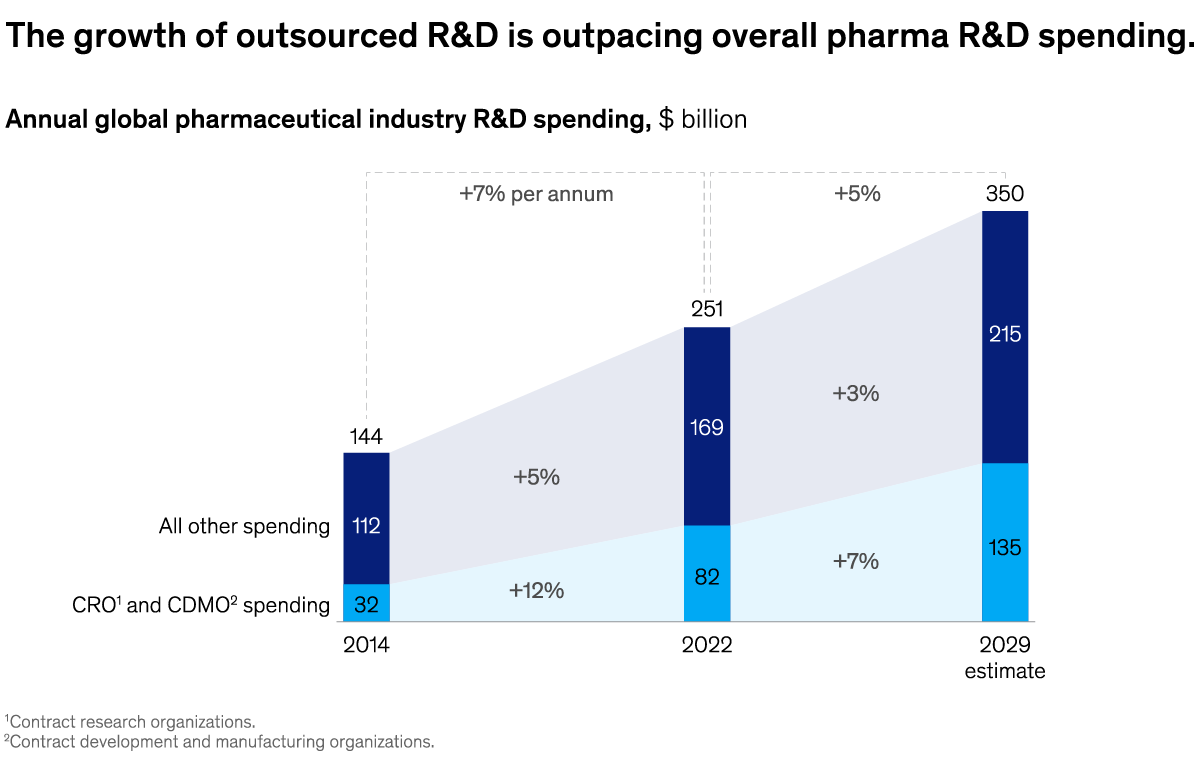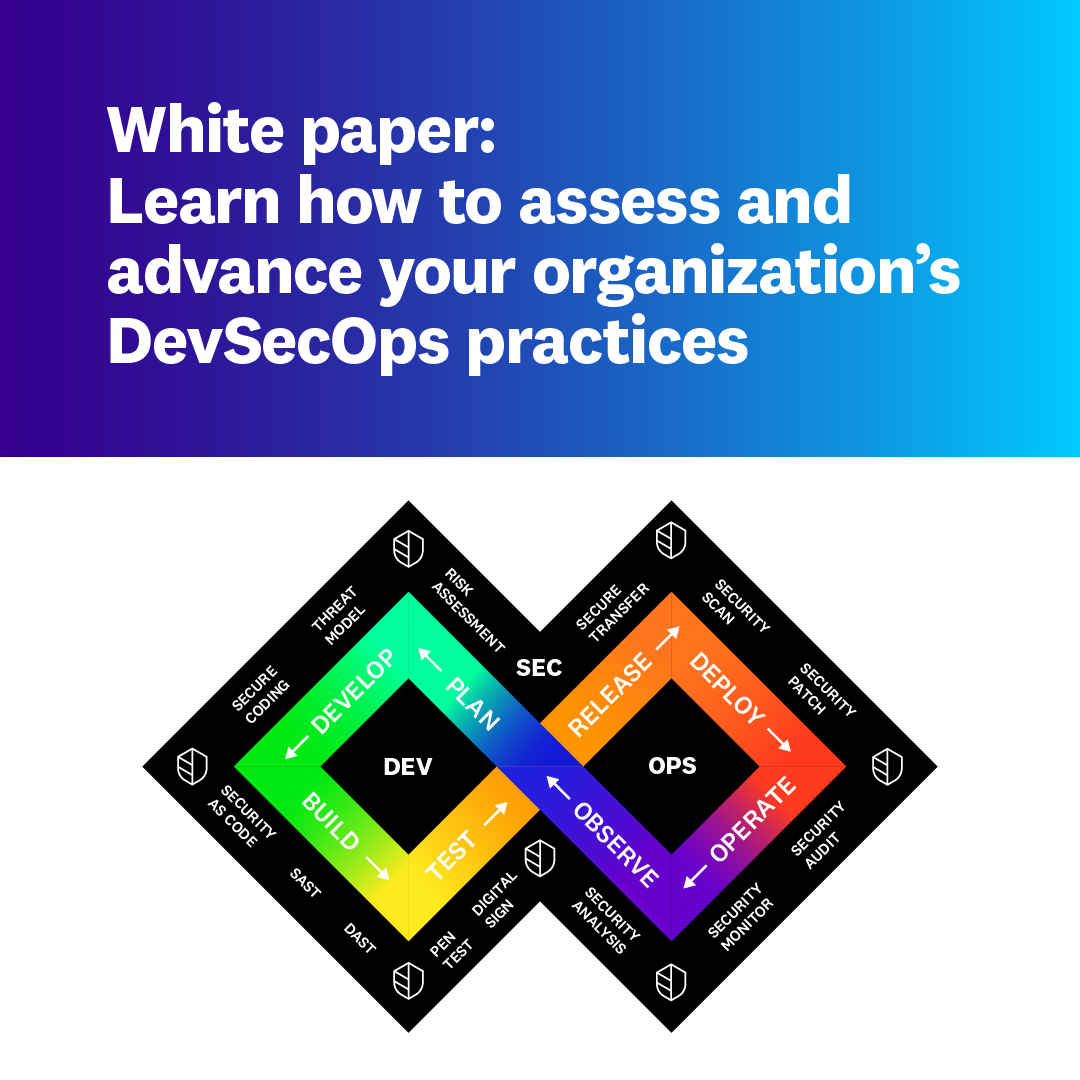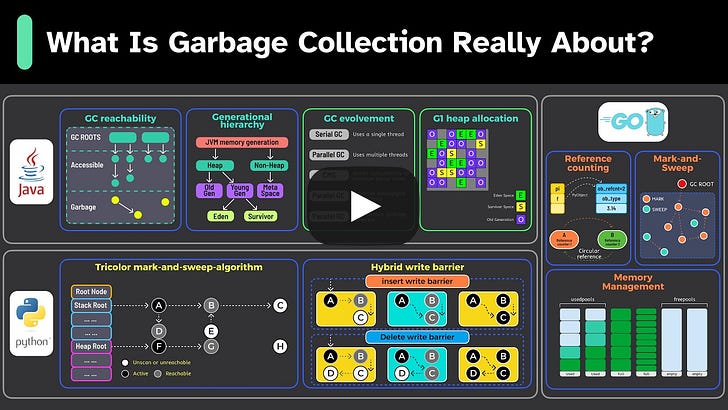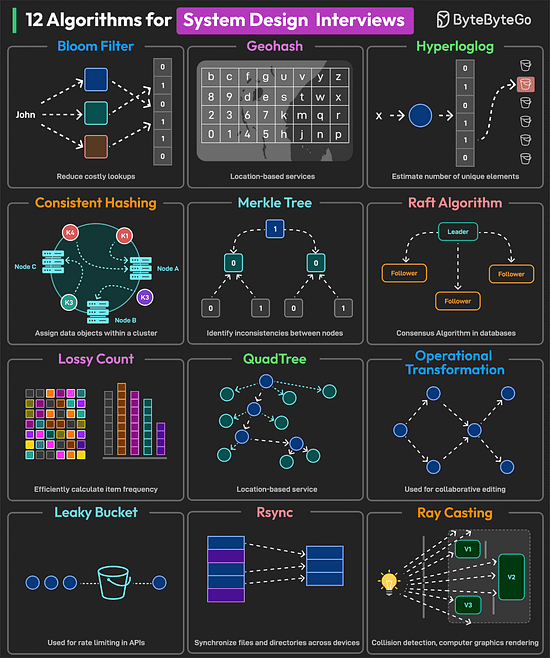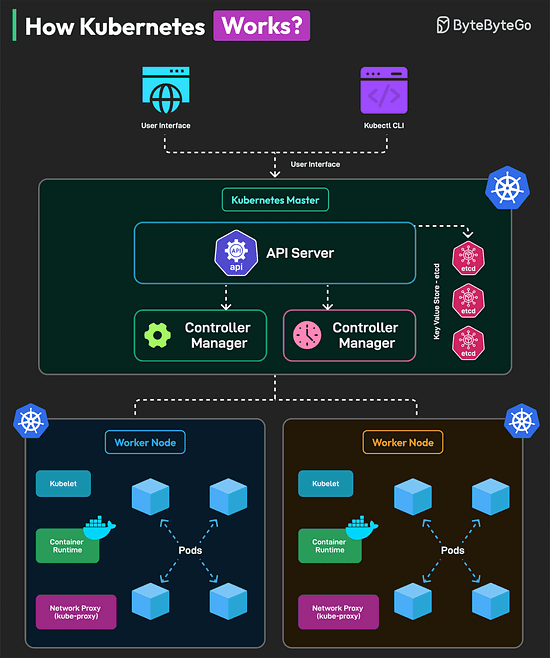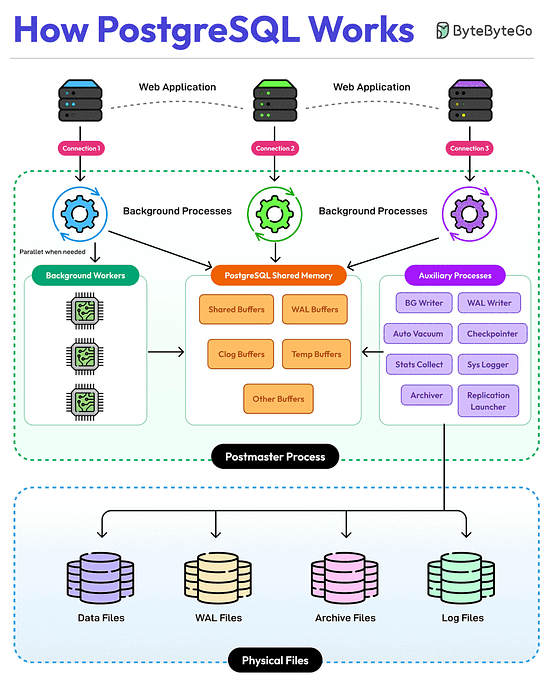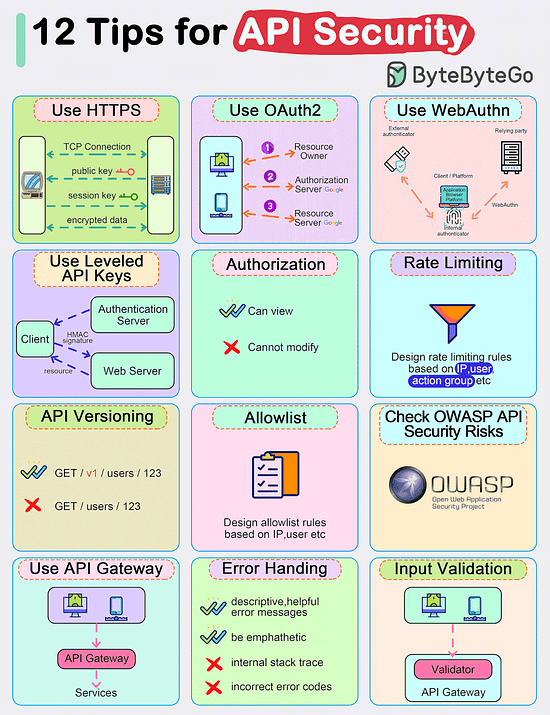Archives
- By thread 5369
-
By date
- June 2021 10
- July 2021 6
- August 2021 20
- September 2021 21
- October 2021 48
- November 2021 40
- December 2021 23
- January 2022 46
- February 2022 80
- March 2022 109
- April 2022 100
- May 2022 97
- June 2022 105
- July 2022 82
- August 2022 95
- September 2022 103
- October 2022 117
- November 2022 115
- December 2022 102
- January 2023 88
- February 2023 90
- March 2023 116
- April 2023 97
- May 2023 159
- June 2023 145
- July 2023 120
- August 2023 90
- September 2023 102
- October 2023 106
- November 2023 100
- December 2023 74
- January 2024 75
- February 2024 75
- March 2024 78
- April 2024 74
- May 2024 108
- June 2024 98
- July 2024 116
- August 2024 134
- September 2024 130
- October 2024 141
- November 2024 171
- December 2024 115
- January 2025 216
- February 2025 140
- March 2025 220
- April 2025 233
- May 2025 239
- June 2025 303
- July 2025 182
-
The evolving landscape of leadership in turbulent times
Leading Off
Open up
by "McKinsey Leading Off" <publishing@email.mckinsey.com> - 04:22 - 17 Feb 2025 -
McKinsey in global media: Early warning systems, competitiveness, climate tech, and more
Join the conversation New from McKinsey & Company
To see more essential reading on topics that matter, visit McKinsey Themes.
— Edited by Cait Murphy, editor, New York
This email contains information about McKinsey’s research, insights, services, or events. By opening our emails or clicking on links, you agree to our use of cookies and web tracking technology. For more information on how we use and protect your information, please review our privacy policy.
You received this email because you subscribed to our McKinsey Quarterly alert list.
Copyright © 2025 | McKinsey & Company, 3 World Trade Center, 175 Greenwich Street, New York, NY 10007
by "McKinsey & Company" <publishing@email.mckinsey.com> - 04:11 - 16 Feb 2025 -
The week in charts
The Week in Charts
Pharma R&D spending, luxury’s slowing growth, and more Share these insights
Did you enjoy this newsletter? Forward it to colleagues and friends so they can subscribe too. Was this issue forwarded to you? Sign up for it and sample our 40+ other free email subscriptions here.
This email contains information about McKinsey's research, insights, services, or events. By opening our emails or clicking on links, you agree to our use of cookies and web tracking technology. For more information on how we use and protect your information, please review our privacy policy.
You received this email because you subscribed to The Week in Charts newsletter.
Copyright © 2025 | McKinsey & Company, 3 World Trade Center, 175 Greenwich Street, New York, NY 10007
by "McKinsey Week in Charts" <publishing@email.mckinsey.com> - 03:13 - 15 Feb 2025 -
How small teams can create big wins
Provide the right support Brought to you by Alex Panas, global leader of industries, & Axel Karlsson, global leader of functional practices and growth platforms
Welcome to the latest edition of McKinsey Classics. We hope you find our perspectives useful. Let us know what you think at Alex_Panas@McKinsey.com and Axel_Karlsson@McKinsey.com.
—Alex and Axel
February 2025
In honor of the 60th birthday of McKinsey Quarterly, the McKinsey Classics newsletter is dedicating a full year to enduring Quarterly articles that were ahead of their time. Enjoy, and check out other celebration highlights such as special themed issues and bonus digital features.
As companies continue to find the right balance of hybrid, remote, and in-office working policies, leaders are grappling with how to create the best conditions for their employees to thrive. They would do well to redouble their efforts in one critical area: supporting small, independent teams.
Small teams are the lifeblood of a successful, agile corporation. Any company facing pressure from fast-moving digital natives or digitally transformed incumbents can no longer afford to shift their strategies every few years. They need to move quickly, and small, independent teams can help companies make the right moves to stay ahead of the competition. But small teams—and their managers—need the right conditions to flourish.
Companies can start by empowering teams with the authority and resources they need to make key decisions independently and by providing teams with a clear and unobstructed view of their target customers. Just as important is training midlevel managers on how to let their teams work in a truly agile manner. This may require embracing new ways of interacting with team members, including acting as stewards rather than superiors, and allowing teams to chart their own course.
Life moves pretty fast—companies need to as well. To learn more about staying agile to stay ahead, read our 2018 McKinsey Quarterly classic “Unleashing the power of small, independent teams.”Read our latest thinking on this classic topic

Go, teams: When teams get healthier, the whole organization benefits
Team effectiveness is crucial to organizational health, yet many teams struggle to collaborate effectively. New data helps explain what makes teams work, including understanding different team archetypes, encouraging leaders to shift away from a command-and-control mindset, and prioritizing key behaviors—then committing to making them stick. Read our latest insights on the topic from Aaron De Smet, Gemma D’Auria, Liesje Meijknecht, Maitham Albaharna, and coauthors.
—Edited by Drew Holzfeind, editor, Chicago
Is there a classic business topic you’d like us to feature? Send us an email—we’d love to hear from you.
Share these insights
Did you enjoy this newsletter? Forward it to colleagues and friends so they can subscribe too. Was this issue forwarded to you? Sign up for it and sample our 40+ other free email subscriptions here.
This email contains information about McKinsey's research, insights, services, or events. By opening our emails or clicking on links, you agree to our use of cookies and web tracking technology. For more information on how we use and protect your information, please review our privacy policy.
You received this email because you subscribed to our McKinsey Classics newsletter.
Copyright © 2025 | McKinsey & Company, 3 World Trade Center, 175 Greenwich Street, New York, NY 10007
by "McKinsey Classics" <publishing@email.mckinsey.com> - 12:46 - 15 Feb 2025 -
EP150: 12 Algorithms for System Design Interviews
EP150: 12 Algorithms for System Design Interviews
Bloom Filter: Check if a requested item is in the cache before performing disk operations.͏ ͏ ͏ ͏ ͏ ͏ ͏ ͏ ͏ ͏ ͏ ͏ ͏ ͏ ͏ ͏ ͏ ͏ ͏ ͏ ͏ ͏ ͏ ͏ ͏ ͏ ͏ ͏ ͏ ͏ ͏ ͏ ͏ ͏ ͏ ͏ ͏ ͏ ͏ ͏ ͏ ͏ ͏ ͏ ͏ ͏ ͏ ͏ ͏ ͏ ͏ ͏ ͏ ͏ ͏ ͏ ͏ ͏ ͏ ͏ ͏ ͏ ͏ ͏ ͏ ͏ ͏ ͏ ͏ ͏ ͏ ͏ ͏ ͏ ͏ ͏ ͏ ͏ ͏ ͏ ͏ ͏ ͏ ͏ ͏ ͏ ͏ ͏ ͏ ͏ ͏ ͏ ͏ ͏ ͏ ͏ ͏ ͏ ͏ ͏ ͏ ͏ ͏ ͏ ͏ ͏ ͏ ͏ ͏ ͏ ͏ ͏ ͏ ͏ ͏ ͏ ͏ ͏ ͏ ͏ ͏ ͏ ͏ ͏ ͏ ͏ ͏ ͏ ͏ ͏ ͏ ͏ ͏ ͏ ͏ ͏ ͏ ͏ ͏ ͏ ͏ ͏ ͏ ͏ ͏ ͏ ͏ ͏ ͏ ͏ ͏ ͏ ͏ ͏ ͏ ͏ ͏ ͏ ͏ ͏ ͏ ͏ ͏ ͏ ͏ ͏ ͏ ͏ ͏ ͏ ͏ ͏ ͏ ͏ ͏ ͏ ͏ ͏ ͏ ͏ ͏ ͏ ͏ ͏ ͏ ͏ ͏ ͏ ͏ ͏ ͏ ͏ ͏ ͏ ͏ ͏ ͏ ͏ ͏ ͏ Forwarded this email? Subscribe here for moreHow to assess and advance your organization's DevSecOps practices (Sponsored)
In this white paper, Datadog lays out a DevSecOps maturity model based on their experience helping thousands of organizations advance their DevSecOps practices.
This model maps key competencies and practices onto four distinct levels of maturity, giving tech leaders a blueprint for understanding where their organizations stand, where they want to be, and how to get there.
This week’s system design refresher:
How the Garbage Collector Works in Java, Python, and Go! (Youtube video)
12 Algorithms for System Design Interviews
How Kubernetes Works?
PostgreSQL 101: The Everything Database
Top 12 Tips for API Security
SPONSOR US
How the Garbage Collector Works in Java, Python, and Go!
12 Algorithms for System Design Interviews
Bloom Filter: Check if a requested item is in the cache before performing disk operations.
Geohash: Used to build location-based services.
HyperLogLog: Counting unique queries performed by users in a search.
Consistent Hashing: Used for efficient data distribution between the cluster’s nodes.
Merkle Tree: Used to detect inconsistencies between data replicas across multiple nodes.
Raft Algorithm: Used to achieve consensus on log replication.
Lossy Count: Network traffic analysis, web analytics, and identifying heavy hitters.
QuadTree: Used to build location-based services.
Operational Transformation: Used to support collaborative editing systems.
Leaky Bucket: Used for rate limiting
Rsync: Synchronizing files and directories between two different systems.
Ray Casting: Used for geospatial analysis, collision detection in video games, and computer graphics.
Over to you: Which other algorithm will you add to the list?
How Kubernetes Works?
Kubernetes (K8S) is an open-source container orchestration platform originally developed by Google and now maintained by the Cloud Native Computing Foundation (CNCF).
Here’s how developers interact with Kubernetes:Developers create manifest files describing the application.
Kubernetes takes these manifest files, validates them, and deploys the applications across its cluster of worker nodes.
Kubernetes manages the entire lifecycle of the application.
Kubernetes is made up of two main components:
Control Plane: It is like the brain of Kubernetes and consists of the following parts:
API Server: It receives all incoming requests from users or CLI.
Scheduler: It decides where to run new pods based on resource availability and constraints.
Controller Manager: It ensures that the cluster’s desired state matches the actual state.
Etcd: The key-value store where Kubernetes keeps all of its data, including configurations, cluster states, and desired states of applications.
Worker Nodes: They are the workers in a cluster. Each node has the below sub-components:
Kubelet: Main worker on each node. It communicates with the API server, gets instructions, and ensures that the containers are running as expected.
Kube-proxy: Handles networking on each node.
Container runtime
Over to you: Have you used Kubernetes for your projects?
PostgreSQL 101: The Everything Database
Built using C language, PostgreSQL is the most popular choice of database from small web apps to enterprise systems. It runs as a multiprocess system and follows ACID principles.
The key points about PostgreSQL’s Architecture are as follows:PostgreSQL supports concurrent client connections independently. Each client connection to PostgreSQL creates a dedicated server process.
The Postmaster Process is the main supervisor that manages all other PostgreSQL processes. It controls the entire database instance.
Background workers run parallel processes when needed to handle specialized tasks.
PostgreSQL shared memory is a central memory area containing multiple buffers such as Shared, WAL, Clog, and Temporary buffers. All components communicate through this shared memory.
PostgreSQL also has several auxiliary processes such as:
BG Writer: Manages background writing
WAL Writer: Handles write-ahead logging
Auto Vacuum: Maintains database cleanliness
Checkpointer: Ensures data consistency
Stats Collector: Gathers statistics
System Logger: Manages Logging
Archiver: Handles archiving
Replication launcher: Manages replication
PostgreSQL has different types of physical files for varied needs such as:
Data Files: Stores actual database data
WAL Files: Write-ahead log storage
Archive Files: Backup and recovery data
Log Files: System and error logs
Over to you: What else would you add to understand more about PostgreSQL’s architecture?
Top 12 Tips for API Security
Use HTTPS
Use OAuth2
Use WebAuthn
Use Leveled API Keys
Authorization
Rate Limiting
API Versioning
Whitelisting
Check OWASP API Security Risks
Use API Gateway
Error Handling
Input Validation
SPONSOR US
Get your product in front of more than 1,000,000 tech professionals.
Our newsletter puts your products and services directly in front of an audience that matters - hundreds of thousands of engineering leaders and senior engineers - who have influence over significant tech decisions and big purchases.
Space Fills Up Fast - Reserve Today
Ad spots typically sell out about 4 weeks in advance. To ensure your ad reaches this influential audience, reserve your space now by emailing sponsorship@bytebytego.com.
Like
Comment
Restack
© 2025 ByteByteGo
548 Market Street PMB 72296, San Francisco, CA 94104
Unsubscribe
by "ByteByteGo" <bytebytego@substack.com> - 11:36 - 15 Feb 2025 -
Hi there, did you get chance to look at this?
Hi there, I hope you're well, I wanted to reach out because Your Telecoms Consultant has been recommended to us, and we have a unique opportunity that you may be interested in. The My Caddie Golf Platform featuring Birchwood Golf Club can help you and the team generate business from our members and visitors, we are looking for a local Telecommunication Company to become our official partner. Aligning your business with such a prestigious establishment can elevate your brand image and generate a positive association in the minds of potential customers. This partnership presents an ideal opportunity to put your company in front of a vast, local and affluent audience whilst also giving you complimentary golf to use as you see fit. Even if you're too busy at the moment, we still like to have you on board as a trusted local company, who could provide our other partners with advice and pass on referrals. Here are some of the features you will receive in the partnership: - Exclusivity for your sector. - Providing you with exposure on the members and visitors iPhone app. - Exposure on the members and visitors Android app. - Your branding on the flyovers on one of the holes on our Birchwood Golf Club web flyovers which is trackable and targeted to your demographic within the local area. - Access to our networking groups between all partners and plus ones. - Complimentary golf for you to entertain clients, colleagues and guests. The cost is the equivalent of just £26 per week for a 2-year partnership + £399 Artwork (one-off, optional) + VAT. Artwork is optional but if you want us to do it for you, you can change it up to 8 times over the 2 years so every quarter you can revamp it and put new offers on. We'll also give It to you for further marketing. I have reached out to a number of companies locally and will be operating on a first come first serve basis so if the above is of interest please let me know as soon as possible to avoid disappointment. Best wishes, Jack Stevens Account Manager 0113 5197 994 We have sent this email to info@learn.odoo.com having found your company contact details online. If you don't want to get any more emails from us you can stop them here - https://w1g.biz/iolmarketinglz/Preference.aspx?p1=MYMTEwNDM0NTE5MDU5MTg3OTYzUzU2NDQ6QkI1RkYzMTkyMkJCRkFEOTJCOTYzN0I4OEY3RDQ5RTc%3d-&p=1 West 1 Group UK Limited, registered in England and Wales under company number 07574948. Our registered office is Unit 1 Airport West, Lancaster Way, Yeadon, Leeds, West Yorkshire, LS19 7ZA. Disclaimer: Our app operates independently. While we provide authentic and accurate hole-by-hole guides, we do not have a direct association with Birchwood Golf Club or claim any endorsement from them. We aim to offer golfers a reliable guide as they navigate their favourite courses. As a value-add for our advertisers, we offer free tee times at Birchwood Golf Club which we procure as any customer would, directly from the venue. We also host networking events, which may be held a various local venues as well as online sessions.Furthermore, advertisers have the unique opportunity to be featured in our flyovers of each golf hole. All offerings are subject to availability and terms.
by "Jack Stevens" <jack@w1g.biz> - 07:36 - 15 Feb 2025 -
Introducing the My Caddie Golf Platform featuring Birchwood Golf Club
Introducing the My Caddie Golf Platform featuring Birchwood Golf Club
Hi there,
I hope you're well, I wanted to reach out because Your Telecoms Consultant has been recommended to us, and we have a unique opportunity that you may be interested in.
The My Caddie Golf Platform featuring Birchwood Golf Club can help you and the team generate business from our members and visitors, we are looking for a local Telecommunication Company to become our official partner.
Aligning your business with such a prestigious establishment can elevate your brand image and generate a positive association in the minds of potential customers.
This partnership presents an ideal opportunity to put your company in front of a vast, local and affluent audience whilst also giving you complimentary golf to use as you see fit. Even if you're too busy at the moment, we still like to have you on board as a trusted local company, who could provide our other partners with advice and pass on referrals.
Here are some of the features you will receive in the partnership:
- Exclusivity for your sector.
- Providing you with exposure on the members and visitors iPhone app.
- Exposure on the members and visitors Android app.
- Your branding on the flyovers on one of the holes on our Birchwood Golf Club web flyovers which is trackable and targeted to your demographic within the local area.
- Access to our networking groups between all partners and plus ones.
- Complimentary golf for you to entertain clients, colleagues and guests.
The cost is the equivalent of just £26 per week for a 2-year partnership + £399 Artwork (one-off, optional) + VAT.
Artwork is optional but if you want us to do it for you, you can change it up to 8 times over the 2 years so every quarter you can revamp it and put new offers on. We'll also give It to you for further marketing.
I have reached out to a number of companies locally and will be operating on a first come first serve basis so if the above is of interest please let me know as soon as possible to avoid disappointment.
Best wishes,
Jack StevensAccount Manager0113 5197 994
We have sent this email to info@learn.odoo.com having found your company contact details online. If you don't want to get any more emails from us you can stop them here.
West 1 Group UK Limited, registered in England and Wales under company number 07574948. Our registered office is Unit 1 Airport West, Lancaster Way, Yeadon, Leeds, West Yorkshire, LS19 7ZA.
Disclaimer: Our app operates independently. While we provide authentic and accurate hole-by-hole guides, we do not have a direct association with Birchwood Golf Club or claim any endorsement from them. We aim to offer golfers a reliable guide as they navigate their favourite courses. As a value-add for our advertisers, we offer free tee times at Birchwood Golf Club which we procure as any customer would, directly from the venue. We also host networking events, which may be held a various local venues as well as online sessions.Furthermore, advertisers have the unique opportunity to be featured in our flyovers of each golf hole. All offerings are subject to availability and terms.
by "Jack Stevens" <jack@w1g.biz> - 10:24 - 14 Feb 2025 -
Need a Mobile App?
Hi,
Do you have a great mobile app idea or an existing app that needs enhancement? Whether you're looking to build an e-commerce app, a social networking platform, or a fitness tracker, we’ve got you covered!
Our expertise spans across:
🚀 Travel & Tourism
🚀 Education & Learning
🚀 Finance & Banking
🚀 Home Services
🚀 Music & Entertainment, and more!Let’s collaborate and create something innovative together. When’s a good time to chat?
Best,
Babli
by "Babli Tripathi" <bablitripathiseo@gmail.com> - 08:35 - 14 Feb 2025 -
What’s the future of the office?
On McKinsey Perspectives
4 key attributes Brought to you by Alex Panas, global leader of industries, & Axel Karlsson, global leader of functional practices and growth platforms
Welcome to the latest edition of Only McKinsey Perspectives. We hope you find our insights useful. Let us know what you think at Alex_Panas@McKinsey.com and Axel_Karlsson@McKinsey.com.
—Alex and Axel
•
Real estate’s new era. The COVID-19 pandemic has had a lasting effect on office attendance, occupancy, and demand, according to McKinsey research from Senior Partners Olivia White and Sven Smit and coauthors. In Empty spaces and hybrid places: The pandemic’s lasting impact on real estate, their findings reveal that in San Francisco, for example, the share of total office space that was vacant was ten percentage points higher in 2022 than it was in 2019. By 2030, demand for offices in major global cities will likely remain lower than it was before the pandemic.
•
Bringing workers back. Real estate owners, operators, and the companies that occupy offices must conceive of a new generation of workplaces—which may mean offering top-notch amenities and prime locations to entice people back into the office. “To beat the working-from-home alternative, spaces should ‘earn the commute,’” McKinsey Senior Partner Aditya Sanghvi suggests. Explore our new interactive, “The future of the office,” for more information on four crucial attributes of the office of tomorrow, and discover more of McKinsey Quarterly’s insights in a special edition to mark its 60th birthday.
—Edited by Belinda Yu, editor, Atlanta
This email contains information about McKinsey's research, insights, services, or events. By opening our emails or clicking on links, you agree to our use of cookies and web tracking technology. For more information on how we use and protect your information, please review our privacy policy.
You received this email because you subscribed to the Only McKinsey Perspectives newsletter, formerly known as Only McKinsey.
Copyright © 2025 | McKinsey & Company, 3 World Trade Center, 175 Greenwich Street, New York, NY 10007
by "Only McKinsey Perspectives" <publishing@email.mckinsey.com> - 01:27 - 14 Feb 2025 -
Join us today for the latest announcements and brand-new product demos.
It's not too late to register.

Today,
SAP announces a bold new vision.Are you ready for the next era of enterprise management?
Today at SAP Business Unleashed, SAP leaders, customers, and industry experts will come together to showcase how SAP combines AI, data, and applications like never before to unleash your full potential and make you unstoppable.
What are you waiting for? Register today to unlock your virtual front row seat to hot-off-the press announcements, brand-new product demos, high-value customer stories, and expert Q&A.

Pro Tip: Can’t attend live? You can still register to receive the replay link.
SAP (Legal Disclosure | SAP)
This e-mail may contain trade secrets or privileged, undisclosed, or otherwise confidential information. If you have received this e-mail in error, you are hereby notified that any review, copying, or distribution of it is strictly prohibited. Please inform us immediately and destroy the original transmittal. Thank you for your cooperation.You are receiving this e-mail for one or more of the following reasons: you are an SAP customer, you were an SAP customer, SAP was asked to contact you by one of your colleagues, you expressed interest in one or more of our products or services, or you participated in or expressed interest to participate in a webinar, seminar, or event. SAP Privacy Statement
This e-mail was sent to you on behalf of the SAP Group with which you have a business relationship. If you would like to have more information about your Data Controller(s) please click here to contact webmaster@sap.com.
This promotional e-mail was sent to you by SAP Global Marketing and provides information on SAP's products and services that may be of interest to you. If you would prefer not to receive such e-mails from SAP in the future, please click on the Unsubscribe link.
To ensure you continue to receive SAP related information properly please add sap@mailsap.com to your address book or safe senders list.

by "SAP Business Unleashed" <sap@mailsap.com> - 10:13 - 13 Feb 2025 -
Enhance Your Cutting Precision with Our Diamond Tools!
Hi info,
I hope this email finds you well. I am Terry Tong, Sales Manager at XIAMEN AME Laser Diamond Tools Co., Ltd. With years of expertise in the construction industry, we specialize in high-performance diamond tools for concrete cutting, asphalt cutting, and stone cutting.
Our top-selling products, including the Ring Saw and Laser Arix Wall Blade, are known for their precision, durability, and cost-effectiveness. We are confident that we can provide you with the best quality at competitive prices, helping you achieve superior results in all your projects.


Explore our offerings and let's discuss how we can be your reliable partner in China!
Looking forward to your inquiry.
Best regards,
Terry Tong
CONTACT INFORMATION
Terry Tong, Sales manger
Email:sales@ame-tool.com
WhatsApp:+8615960281779
by "Achi Kimron" <achikimron6@gmail.com> - 09:19 - 13 Feb 2025 -
hello manager
Estimado gerente,
¿Cómo está? Le deseo un feliz año nuevo. Soy Lily de MSK (Tianjin) Cutting Technology Co., Ltd. Obtuve su información de contacto de Google. Somos un proveedor de herramientas de corte de carburo, fresas, taladros, machos de roscar y mandriles. También representamos la gama completa de productos Mitsubishi y VERTEX. Nuestra empresa obtuvo la certificación Rhine ISO 9001 en 2016. Durante este período, hemos seguido creciendo y desarrollándonos. Nuestros productos son de alta calidad y precio competitivo, y son bien recibidos por los clientes en muchos países. Al mismo tiempo, también ofrecemos servicios OEM gratuitos, que pueden ayudarlo a promover su marca a nivel local. Después de recibir su respuesta, le enviaré nuestro catálogo de productos.
Esperando su respuesta
Le deseo a usted y a su familia un feliz año nuevo, que todo sea como lo desea, buena salud y negocios prósperos.
by lilymsktools@mail-serve-hg.com - 01:37 - 13 Feb 2025 -
Non-Functional Requirements: The Backbone of Great Software - Part 1
Non-Functional Requirements: The Backbone of Great Software - Part 1
Non-functional requirements (NFRs) are as critical as functional requirements because they define a system's qualities and operational parameters.͏ ͏ ͏ ͏ ͏ ͏ ͏ ͏ ͏ ͏ ͏ ͏ ͏ ͏ ͏ ͏ ͏ ͏ ͏ ͏ ͏ ͏ ͏ ͏ ͏ ͏ ͏ ͏ ͏ ͏ ͏ ͏ ͏ ͏ ͏ ͏ ͏ ͏ ͏ ͏ ͏ ͏ ͏ ͏ ͏ ͏ ͏ ͏ ͏ ͏ ͏ ͏ ͏ ͏ ͏ ͏ ͏ ͏ ͏ ͏ ͏ ͏ ͏ ͏ ͏ ͏ ͏ ͏ ͏ ͏ ͏ ͏ ͏ ͏ ͏ ͏ ͏ ͏ ͏ ͏ ͏ ͏ ͏ ͏ ͏ ͏ ͏ ͏ ͏ ͏ ͏ ͏ ͏ ͏ ͏ ͏ ͏ ͏ ͏ ͏ ͏ ͏ ͏ ͏ ͏ ͏ ͏ ͏ ͏ ͏ ͏ ͏ ͏ ͏ ͏ ͏ ͏ ͏ ͏ ͏ ͏ ͏ ͏ ͏ ͏ ͏ ͏ ͏ ͏ ͏ ͏ ͏ ͏ ͏ ͏ ͏ ͏ ͏ ͏ ͏ ͏ ͏ ͏ ͏ ͏ ͏ ͏ ͏ ͏ ͏ ͏ ͏ ͏ ͏ ͏ ͏ ͏ ͏ ͏ ͏ ͏ ͏ ͏ ͏ ͏ ͏ ͏ ͏ ͏ ͏ ͏ ͏ ͏ ͏ ͏ ͏ ͏ ͏ ͏ ͏ ͏ ͏ ͏ ͏ ͏ ͏ ͏ ͏ ͏ ͏ ͏ ͏ ͏ ͏ ͏ ͏ ͏ ͏ ͏ ͏ Forwarded this email? Subscribe here for moreLatest articles
If you’re not a subscriber, here’s what you missed this month.
To receive all the full articles and support ByteByteGo, consider subscribing:
Non-functional requirements (NFRs) are as critical as functional requirements because they define a system's qualities and operational parameters.
While functional requirements specify what a software product should do (for example, “users must be able to log in”), non-functional requirements define how well it must accomplish these tasks under real-world conditions (for example, “the login process should respond within two seconds under peak load” or “all user credentials must be encrypted and stored securely”).
Together, functional and non-functional requirements create a foundation for building great software systems.
NFRs are essential for the following reasons:
Quality of Service: NFRs like response time, availability, and usability directly affect the user’s perception of quality. A system that fulfills its functional requirements but is slow, constantly crashes, or is difficult to use can undermine user trust and satisfaction.
System Stability: Requirements such as reliability, fault tolerance, and recoverability help maintain stable operation even when part of the system fails. Without these, unhandled errors can escalate into large-scale outages.
Security and Compliance: Security-related NFRs dictate how data is protected, how access is controlled, and how audits are conducted. Neglecting these can lead to breaches, legal consequences, or reputational damage.
Scalability and Performance: Requirements for throughput, capacity, and resource utilization ensure the software can handle growth in users or data. If not addressed from the start, scaling can become prohibitively expensive or technically challenging later on.
Maintenance and Evolution: Maintainability, testability, and modularity requirements determine how easily bugs can be fixed, features added, or adaptations made to changing environments. Overlooking them can lead to ballooning technical debt, slowing down future development.
In short, non-functional requirements are not mere “nice-to-haves” but essential components that ensure a software system truly meets user expectations and withstands real-world challenges.
In this article (Part 1), we’ll look at the differences between functional and non-functional requirements. Then, we’ll explore the various trade-offs in NFRs and their architectural impact on building systems.
Functional vs Non-Functional Requirements...

Continue reading this post for free in the Substack app
Like
Comment
Restack
© 2025 ByteByteGo
548 Market Street PMB 72296, San Francisco, CA 94104
Unsubscribe
by "ByteByteGo" <bytebytego@substack.com> - 11:36 - 13 Feb 2025 -
Re: Join us for the most transformative platform update yet
Hi MD,Just bumping this up in what I'm sure is a very busy inbox. Are you available for a discussion prior to the event?Thanks,ThomasConsultantNew Relic
If you don't want to hear from me again, please let me know.On Feb 11, 2025 9:14 AM, "Thomas Sampassa-Ilunga" <tilunga@newrelic.com> wrote:
Hi MDI’m thrilled to invite you to New Relic Now+, where Intelligent Observability breaks new ground on 27th February (9am GMT / 10am CET).
At this free virtual event, we’re unveiling New Relic’s most transformative platform update yet, designed to go far beyond system health and uptime to power real-time business impact and leverage intelligence to accelerate developer velocity.
Here’s what’s in store:
- Learn how agentic AI proactively predicts and prevents issues while unlocking powerful recommendations.
-
Hear from industry leaders about driving measurable business outcomes with Intelligent Observability.
-
Take part in hands-on workshops that give you critical new skills you can apply today.
-
Be first to see 15+ new product innovations and live demos.
Let me know if you’d like to discuss how these innovations can work for your organization ahead of the event—I’d be happy to chat.
We’d love to see you there,ThomasThomasConsultantNew Relic
If you don't want to hear from me again, please let me know.
by "Thomas Sampassa-Ilunga" <tilunga@newrelic.com> - 04:56 - 13 Feb 2025 -
What it takes to achieve—and sustain—growth
On McKinsey Perspectives
5 key mindsets Brought to you by Alex Panas, global leader of industries, & Axel Karlsson, global leader of functional practices and growth platforms
Welcome to the latest edition of Only McKinsey Perspectives. We hope you find our insights useful. Let us know what you think at Alex_Panas@McKinsey.com and Axel_Karlsson@McKinsey.com.
—Alex and Axel
•
Growth-related gaps. For business leaders everywhere, growing profitably—and sustainably—is the ultimate goal. But achieving and maintaining growth is tough work, explain McKinsey Senior Partners Andy West and Jill Zucker and their coauthors. A McKinsey survey of more than 500 leaders (including CEOs) finds that while many respondents believe that they’ve adopted productive mindsets for growth, their attitudes and ambitions don’t always translate into the behaviors and actions that are necessary to enable growth.
—Edited by Belinda Yu, editor, Atlanta
This email contains information about McKinsey's research, insights, services, or events. By opening our emails or clicking on links, you agree to our use of cookies and web tracking technology. For more information on how we use and protect your information, please review our privacy policy.
You received this email because you subscribed to the Only McKinsey Perspectives newsletter, formerly known as Only McKinsey.
Copyright © 2025 | McKinsey & Company, 3 World Trade Center, 175 Greenwich Street, New York, NY 10007
by "Only McKinsey Perspectives" <publishing@email.mckinsey.com> - 01:09 - 13 Feb 2025 -
Tomorrow SAP announces a bold new vision.
Whether you watch live or watch later, register NOW to get exclusive access.

Tomorrow,
SAP announces a bold new vision.Are you ready for the next era of enterprise management?
Tomorrow at SAP Business Unleashed, SAP leaders, customers, and industry experts will come together to showcase how SAP combines AI, data, and applications like never before to unleash your full potential and make you unstoppable.
What are you waiting for? Register today to unlock your virtual front row seat to hot-off-the press announcements, brand-new product demos, high-value customer stories, and expert Q&A.

Pro Tip: Can’t attend live? You can still register to receive the replay link.
SAP (Legal Disclosure | SAP)
This e-mail may contain trade secrets or privileged, undisclosed, or otherwise confidential information. If you have received this e-mail in error, you are hereby notified that any review, copying, or distribution of it is strictly prohibited. Please inform us immediately and destroy the original transmittal. Thank you for your cooperation.You are receiving this e-mail for one or more of the following reasons: you are an SAP customer, you were an SAP customer, SAP was asked to contact you by one of your colleagues, you expressed interest in one or more of our products or services, or you participated in or expressed interest to participate in a webinar, seminar, or event. SAP Privacy Statement
This e-mail was sent to you on behalf of the SAP Group with which you have a business relationship. If you would like to have more information about your Data Controller(s) please click here to contact webmaster@sap.com.
This promotional e-mail was sent to you by SAP Global Marketing and provides information on SAP's products and services that may be of interest to you. If you would prefer not to receive such e-mails from SAP in the future, please click on the Unsubscribe link.
To ensure you continue to receive SAP related information properly please add sap@mailsap.com to your address book or safe senders list.

by "SAP Business Unleashed" <sap@mailsap.com> - 11:12 - 12 Feb 2025 -
Explore the state of digital transformation in ASEAN
Read about the key trends sharing ASEAN's digital landscape
2024 Connectivity Benchmark Report

Read the blog The 2024 Connectivity Benchmark Report sheds light on the state of digital transformation worldwide, with the latest trends in AI, integration, automation and API management.
See how IT leaders from Singapore Institute of Management (SIM), Lotus's, and M1 are adopting AI, workflow automation and APIs to increase revenue, operational efficiency and innovation.

Salesforce Innovation Day: Broadcast
Discover Dreamforce innovations & unlock Agentforce benefits. Hear insights from Trailblazers like Grab and thought leaders on overcoming AI challenges.
Watch now © 2025, Salesforce, Inc.
Salesforce.com 2 Silom Edge, 14th Floor, Unit S14001-S14007, Silom Road, Suriyawong, Bangrak, Bangkok 10500
General Enquiries: +66 2 430 4323




This email was sent to info@learn.odoo.com
Manage Preferences or Unsubscribe | Privacy Statement
Powered by Salesforce Marketing Cloud
by "MuleSoft from Salesforce" <apacemarketing@mail.salesforce.com> - 10:10 - 12 Feb 2025 -
Superagency: The transformative potential of AI
Test your knowledge New from McKinsey & Company
AI in Action: An interactive learning journey is a complement to our Superagency in the workplace report, both inspired by Silicon Valley pioneer Reid Hoffman’s book Superagency: What Could Possibly Go Right with Our AI Future.
Our research finds that the biggest barrier to scaling is not employees—who are ready to incorporate AI into their jobs—but leaders, who are not steering fast enough. This four-part learning series expands on topical themes with rich video conversations and interactive experiences, featuring exclusive content from Hoffman and McKinsey Senior Partner Lareina Yee.
In part one, explore the transformative potential of AI by learning about agentic AI, the cognitive industrial revolution, and more. Regardless of your background with AI, there is much to learn and inspire in the content—we encourage you to immerse yourself in these activities and proceed at your own pace.Subscribe for more
Click to sign up to our Artificial Intelligence or Digital mailing lists to get the rest of this four-part learning series plus future McKinsey insights on these topics.
This email contains information about McKinsey’s research, insights, services, or events. By opening our emails or clicking on links, you agree to our use of cookies and web tracking technology. For more information on how we use and protect your information, please review our privacy policy.
You received this email because you are a registered member of mckinsey.com.
Copyright © 2025 | McKinsey & Company, 3 World Trade Center, 175 Greenwich Street, New York, NY 10007
by "McKinsey & Company" <publishing@email.mckinsey.com> - 02:17 - 12 Feb 2025 -
How to build your leadership muscle
On McKinsey Perspectives
Winning leadership practices Brought to you by Alex Panas, global leader of industries, & Axel Karlsson, global leader of functional practices and growth platforms
Welcome to the latest edition of Only McKinsey Perspectives. We hope you find our insights useful. Let us know what you think at Alex_Panas@McKinsey.com and Axel_Karlsson@McKinsey.com.
—Alex and Axel
•
CEO as athlete. Elite athletes and modern CEOs have a lot in common, according to Bob Sternfels, McKinsey’s global managing partner, and Daniel Pacthod, senior partner. Just as modern sports stars are stronger, better coached, and better prepared than those of the past, today’s best leaders have made profound shifts in their thinking about and approach to the job. Indeed, McKinsey research has identified several traits that are required to lead in the 21st century: for example, positive energy, a sense of service, and a belief in continuous learning.
—Edited by Belinda Yu, editor, Atlanta
This email contains information about McKinsey's research, insights, services, or events. By opening our emails or clicking on links, you agree to our use of cookies and web tracking technology. For more information on how we use and protect your information, please review our privacy policy.
You received this email because you subscribed to the Only McKinsey Perspectives newsletter, formerly known as Only McKinsey.
Copyright © 2025 | McKinsey & Company, 3 World Trade Center, 175 Greenwich Street, New York, NY 10007
by "Only McKinsey Perspectives" <publishing@email.mckinsey.com> - 01:09 - 12 Feb 2025 -
Drawing Parallels Between Super Bowl LIX and ERP Systems
Drawing Parallels Between Super Bowl LIX and ERP Systems
Hi MD Abul,
As the excitement of Super Bowl LIX settles, where the Philadelphia Eagles triumphed over the Kansas City Chiefs with a score of 40-22, it's a great time to reflect on the parallels between the NFL's top teams and leading ERP systems.
In our blog post, "If ERP Systems Were NFL Teams!", we draw creative analogies between various ERP solutions and NFL franchises. For instance, we compare the Dallas Cowboys to Oracle, highlighting their long-standing success and expansive fan base. Similarly, the New England Patriots are likened to NetSuite, emphasizing their rise to prominence and sustained excellence.
These comparisons offer a unique perspective on how different ERP systems align with the characteristics of NFL teams, providing insights that can guide your organization's digital transformation journey.
To explore these analogies further and see which ERP system aligns with your organization's goals, read the full article here.Best regards,
Eric Kimberling
Third Stage Consulting 384 Inverness Pkwy Suite Englewood Colorado
You received this email because you are subscribed to Marketing Information from Third Stage Consulting.
Update your email preferences to choose the types of emails you receive.
Unsubscribe from all future emails
by "Eric Kimberling" <eric.kimberling@thirdstage-consulting.com> - 05:03 - 11 Feb 2025




















